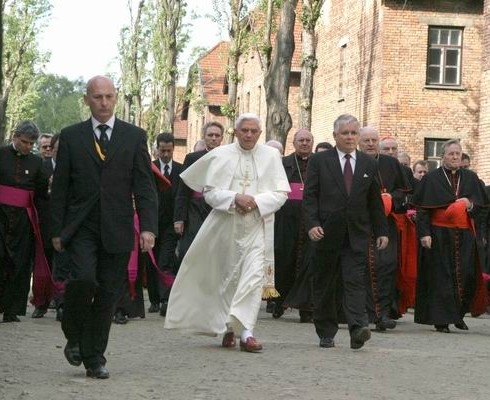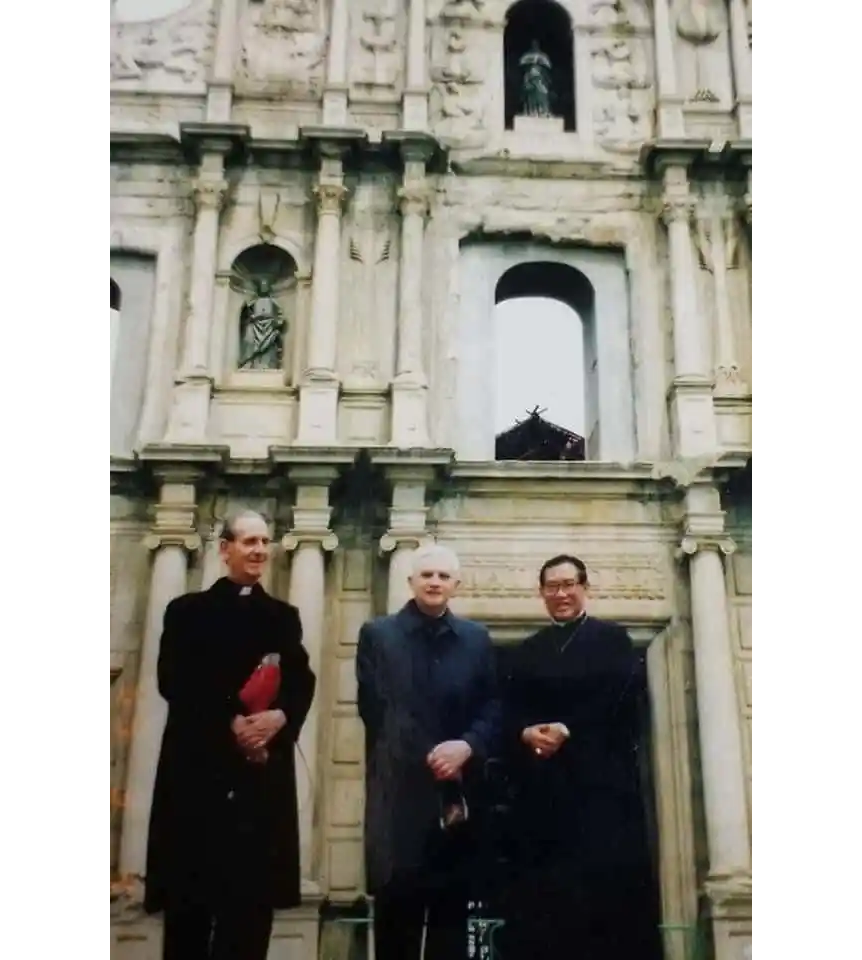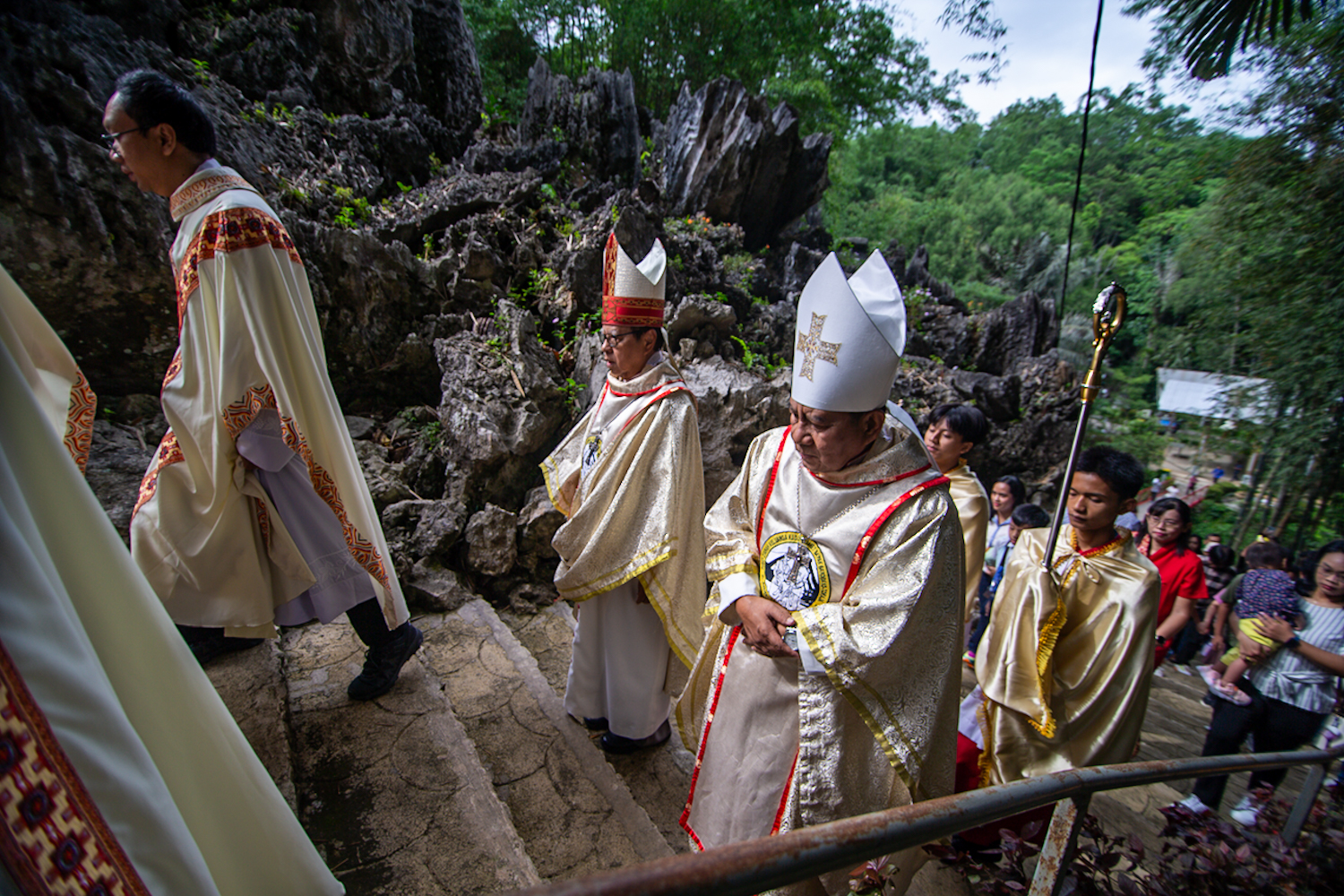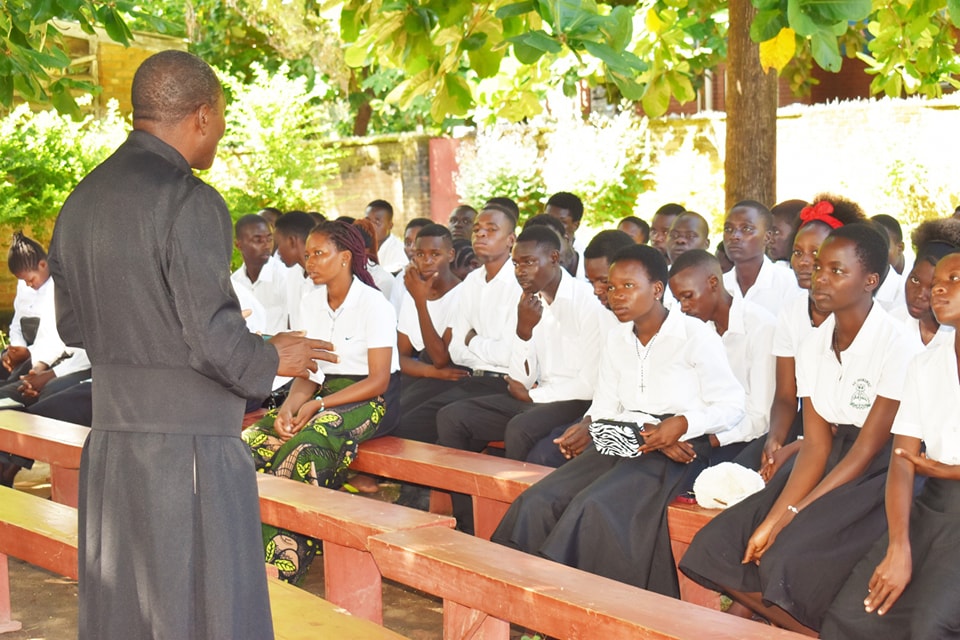Main image: Cardinal Joseph Ratzinger in front of the façade of the ruins of St. Paul in Macau with Bishop Domingos Lam (right) in 1993. (Photo: Catholic Diocese of Macau)
Marco Carvalho
In nearly eight years of his pontificate, Australia was the closest that Benedict XVI was to Macau. But more than a decade before he was elected to the Chair of Peter, on April 19, 2005, Joseph Ratzinger paid a fleeting visit to the oldest Diocese of the Far East. He was then the head of the Vatican’s Congregation for the Doctrine of the Faith.
Already a highly regarded theologian, Cardinal Ratzinger visited Macau in March 1993. The future pope presided over the general-assembly of the Federation of Asian Bishops’ Conference that took place in neighbouring Hong Kong. During the meeting, Ratzinger urged the bishops of Asia to regard the mission of the Asian Church more in terms of ‘inter-culturality’ in lieu of ‘inculturation’.
The pioneering role played by Macau in terms of inter-cultural exchanges was possibly one of the reasons why the then Prefect for the Congregation of the Doctrine of the Faith decided to pay a brief but influential visit to the oldest Catholic Diocese in the Far East.
In Macau, Cardinal Ratzinger met the then bishop D. Domingos Lam at the Cathedral of the Nativity of Our Lady, visited the iconic façade of the Ruins of Saint Paul’s, and toured some of the streets of the city’s historic center together with various members of the local Catholic hierarchy. Former Superior of the Society of Jesus in Macau, Father Luís Sequeira was among them. The Portuguese missionary exchanged impressions with Joseph Ratzinger about Johan Adam Schall von Bell, a German Jesuit and astronomer who oversaw significant improvements in the Chinese calendar. Father Sequeira recalls a discreet and humble man, with an astonishing erudition.
“He was in Hong Kong where he presided over the Episcopal Conference, and he decided to pay a visit to Macau. This was, in my opinion, very significant because it signals a certain sensitivity to the history of the Church in China and, particularly, to the centuries-old dialogue between China and the Western world, particularly with regard to the Vatican,” the Jesuit missionary claims. “The then Cardinal Ratzinger visited the Cathedral and then he took to the streets, to a small tourist and apostolic visit. I remember that moment quite well,” Father Luís Sequeira told O Clarim.
The former Superior of the Society of Jesus in Macau argues that the eight years of Benedict XVI’s pontificate confirmed Ratzinger as a man “with a great intimacy with God”, a perceptive leader and someone deeply aware of the challenges facing the contemporary Church and Humanity itself.
“I am fully convinced that his theological vision of the Church and of Humanity is extremely necessary. It touches a profound problem of Mankind, the fact that Humanity is losing its sense of God, particularly the Western world, which has been moving away from God. It seems, too, that Cardinal Ratzinger was extremely perceptive about this issue and the anguish that it caused,” Father Sequeira claims.
Ratzinger, the bridge-builder

During his eight-year pontificate, the methodical, shy and very diplomatic Benedict XVI never sought to take the place of his charismatic predecessor but implacable media and certain circles of public opinion never spared the German pope from constant comparisons with Saint John Paul II.
Unfair and even abusive, the tendency, architect Francisco Vizeu Pinheiro claims, ended up stripping the pontificate of Benedict XVI of much of its fundamental importance. A lecturer at the University of Saint Joseph, Vizeu Pinheiro recalls Ratzinger’s focus on a Christ-centred life, his rational approach to faith and the impulse to promote ecumenical and inter-religious dialogue.
“He was always someone who encouraged the hypothesis of dialogue through reason. That, I think, was his greatest contribution. He was way less dogmatic than he was scientific because theology is also a science. On the other hand, he always sought to unite, to create bridges through his theology,” the architect attests.
“Pope Benedict XVI was often criticized but most of these attacks were, actually, quite unfair. He was a man who managed to build bridges. He built bridges with the Anglicans. He built bridges with the Lutherans, by establishing an agreement on the aspects in which Catholics and Lutherans were on the same page. He also leaves an extraordinary legacy in terms of rapprochement and reconciliation with other religions, especially with Judaism, by endorsing the view that Catholicism borrows many things from Judaísm. This contribution to ecumenism and inter-religious dialogue is one of the fundamental aspects of his pontificate,” Pinheiro told O Clarim.
But Joseph Ratzinger, the lecturer recollects, has also made a great contribution to the Church in China. The German Pope has always perceived that the experiences of Chinese Catholics are linked, in a special way, to the mystery of the Church. It was Benedict XVI who introduced the ‘Day of Prayer for the Church in China’ with his “Letter to Chinese Catholics” in 2007.
“The letter that he wrote to the Chinese Catholics in 2007 is extremely important. This document exposes very clearly the situation of the Church in China and points out to eventual solutions, namely the extinction of the Patriotic Association that controls the Church in China. Pope Benedict was very adamant on his defence of the principle that the Church should have direct relations with the Chinese Government in order to avoid any sort of schism among Catholics. This was one of the great contributions he made to the Church here in our region,” Pinheiro argues.


 Follow
Follow


